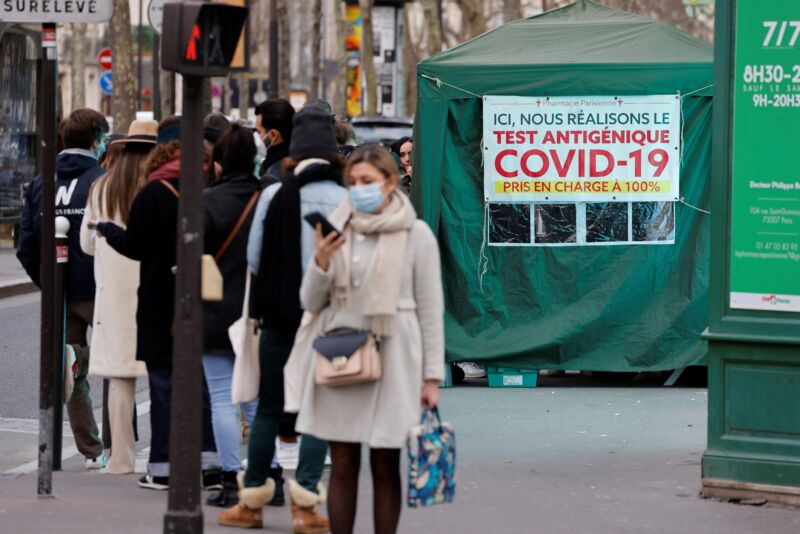
Omicron subvariants BA.4 and BA.5 are on the rise in the European Union, urging officials there to warn that a surge in COVID-19 cases is likely to follow in the coming weeks.
In a warning Monday, the European Center for Disease Prevention and Control warned that several factors would influence how bad the expected BA.4/BA.5 wave will be. Those factors include the degree of vaccination and previous infection in the population, as well as the timing since those events, as protection against both wears off over time.
BA.4 and BA.5 are clumped together because they share the same mutations in the genetic coding for their spike proteins, although they have different mutations elsewhere in their genome. Both have a transmission advantage over the initial omicron subvariant, BA.1, as well as subvariants BA.2 and BA.2.12.1.
To date, there is no evidence that BA.4 or BA.5 cause more severe infections than the currently circulating ommicron subvariants, notably BA.2 and BA.2.12.1. But the pair seem more capable of evading immune protection against vaccines and previous omicron infections, potentially leading to more breakthrough infections. “As in previous waves,” the ECDC writes, “an increase in COVID-19 cases could lead to an increase in hospitalizations, ICU admissions and deaths.”
ascending subvariants
BA.4 and BA.5 were first seen in South Africa in January and February and arrived in the EU in March. Recently, its spread has accelerated. Portugal is the first EU country to see a surge, with BA.5 accounting for 87 percent of cases as of May 30. Now BA.4 and BA.5 are increasing in Austria, Belgium, Denmark, France, Germany, Ireland, Italy, Netherlands, Spain and Sweden.
In Belgium, BA.5 recently represented 19 percent of the samples and BA.4 accounted for 7.5 percent. In Spain, BA.4 and BA.5 accounted for more than 10 percent. In the Netherlands, BA.5 recently reached 8 percent, while BA.4 was close to about 5 percent.
The US faces a similar outlook with BA.4 and BA.5 gaining ground close to the heels of BA.2.12.1, which only achieved dominance in the US at the end of May. According to the latest data from the U.S. Centers for Disease Control and Prevention, BA.2.12.1 currently accounts for an estimated 62.2 percent of U.S. cases, while BA.4 accounts for 5.4 percent and BA.5 for 7.6 per cent. Less than a month ago, the couple together accounted for about 2 percent of cases.
The pair has significant potential to fuel another wave of infection in the US. Although more than 28 million Americans were infected during the BA.1 wave that peaked in January, BA.4 and BA.5 can evade BA.1-derived neutralizing antibodies. And while the Food and Drug Administration approved a second COVID-19 booster dose for people over 50 in March, only 15 million people in that age group have received a second booster so far. That’s about 25 percent of the people who got the first booster. Only 47 percent of fully vaccinated people across all age groups — about 104 million — received their first booster since last fall.

